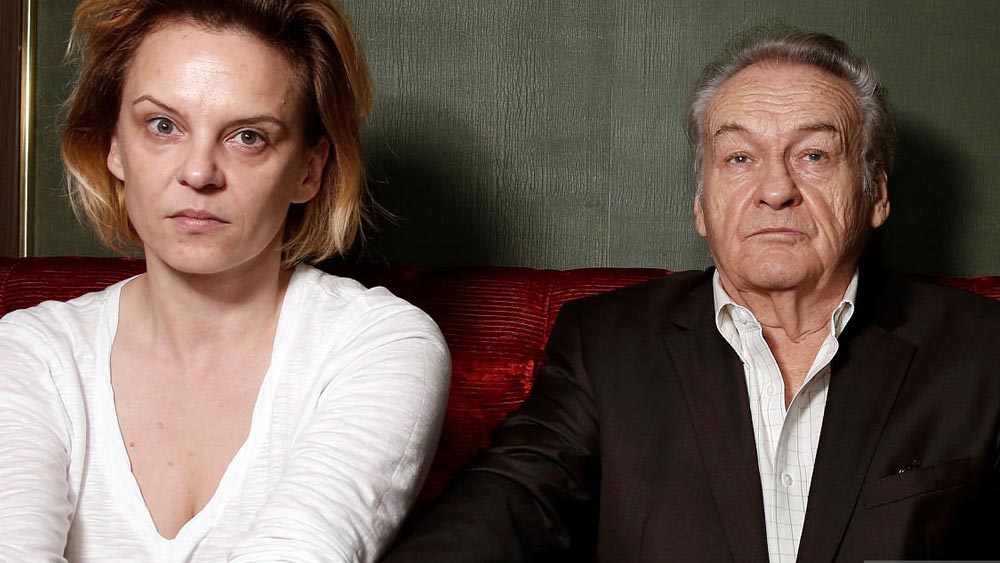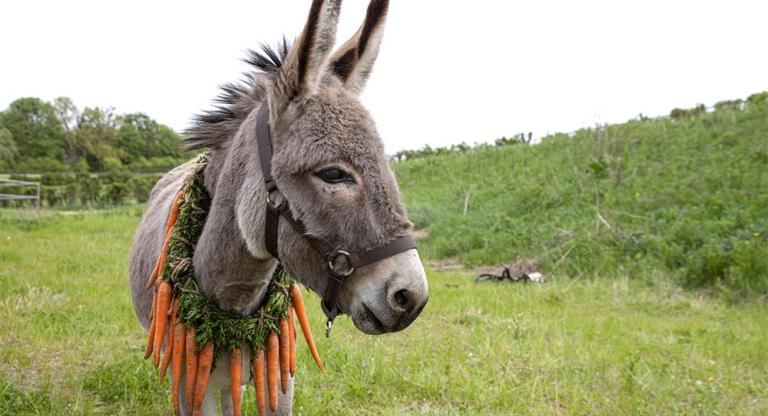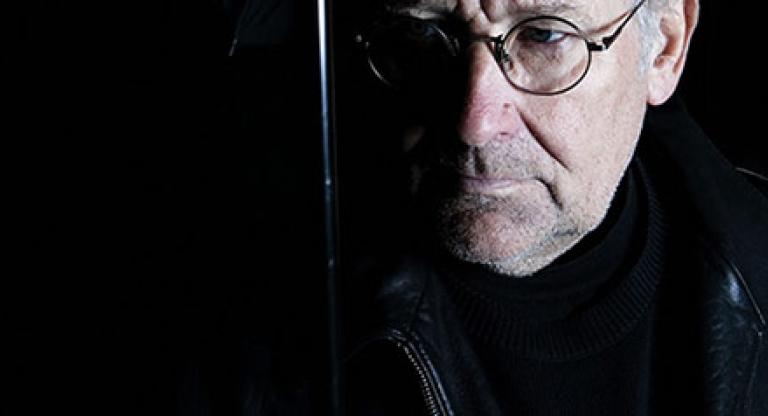Polish director Jerzy Skolimowski has been making films for more than half a century. His latest, about a donkey, is a propulsive force alternating between kinetic beauty and anguish. Unloosed, at the behest of animal-rights activists, from his loving handler at the circus, the fuzzy equine—named EO, the onomatopoeia of the animal’s braying—is launched into a sprawling journey across the Polish countryside and beyond. Over the course of 86 minutes tinged with the dirty aura of the political, EO is subject to the indulgences and idiocies of human beings. He becomes a town mascot, takes in a soccer game, clomps over the river, through the woods. He is fed by children, he is brutalized.
Unsparing and audacious, EO (2022) uses Robert Bresson’s Au Hasard Balthazar (1966) as a springboard and reaches beyond the monumental classic, teasing out a stylistically provocative record of the modern world. EO and his participatory travails are subject to our fragmented, anxious present, interpreted variously through disorienting closeups, vertiginous overhead shots, gauzy enchantment, and an exquisitely thunderous score.
The film marks the third writing collaboration between Skolimowski and Ewa Piaskowska, who is also his wife and the film’s producer. I spoke with them both about their process and collaboration ahead of EO’s theatrical run in New York.
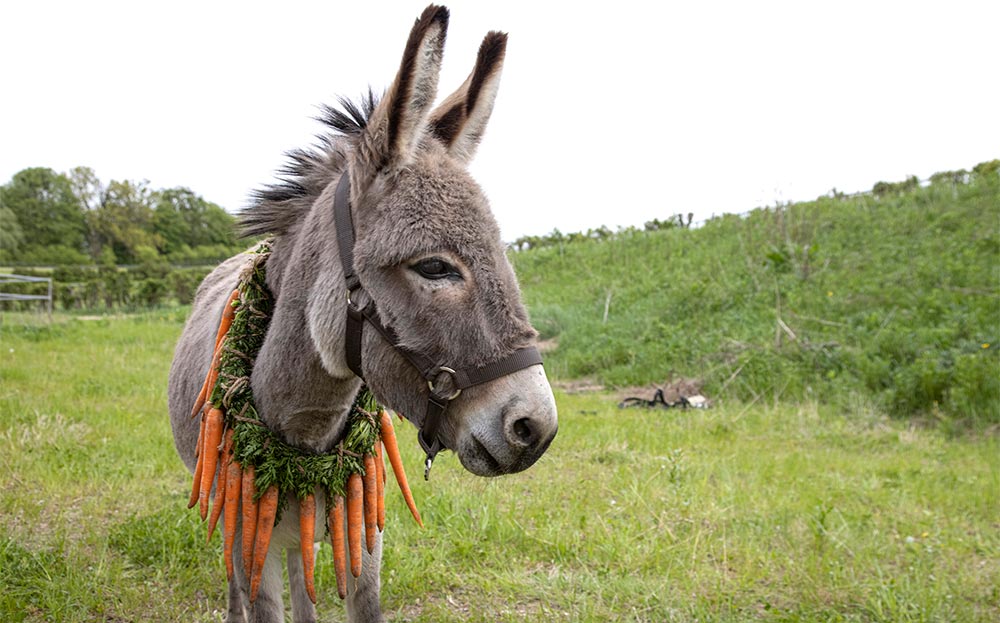
Ewa Piaskowski: Sorry I’m late. I was just walking the dog.
Elissa Suh: What’s his name?
EP: Bufon. He’s a long-haired German shepherd.
Jerzy Skolimowski: He’s in the movie: the dog who is barking at the donkey on the chain. This is the only time I've seen him bark like that.
ES: I read that you actually came up with the idea for EO, Ewa. Can you talk about the genesis of the film?
EP: How did I come up with it, Jerzy? Usually he tells this story. For a while we were watching a lot of films on Netflix and those streaming platforms—there are millions and millions of films, and honestly we thought we’d like to do something different and divergent from the prevalent narrative structure and plot points, which follow the same typical exercises that generate most of these films.
JS: We were essentially fed up with linear narration and we wanted to try to narrate a film in a different way. We thought if we cast an animal in the leading part, it would help because we had to eliminate dialogue and look for other means of expression.
EP: And Jerzy forever has said the only film that moved him to tears in a cinema is Au Hasard Balthazar, so suddenly it came together, something with an animal, and that was fabulous.
ES: How does the writing process work in that regard since not everything is linear? Do you think about chronology?
EP: The finished script pretty much included all the things that would appear to be spontaneously found on set, but are actually written in. Since we’ve written three screenplays together, the two of us, the process is the same: We talk and talk and talk, and the idea germinates for a really long time before putting words on paper.
JS: Normally after several weeks of talking and thinking there is a week or ten days of intense writing when the pages go back and forth between us.
EP: I’m a night person, so I work then, and when Jerzy wakes up he adds things, makes cuts, inclusions. We purposefully do it in a very intense way—working at different paces makes for an immediate and interesting energy.
ES: During this period of creative frenzy, is that when you’re watching films? Are you painting at all or taking in art?
EP: Not when writing. We go into a different mode. It’s really feverish.
JS: We accumulate so much, during these weeks of thinking and talking and reading—Juan Ramon Jiminez, the Spanish writer, wrote a beautiful book about a donkey [Platero and I]— that we need to throw it out in a rapid outburst.
ES: With Bresson looming overhead, were there certain things you were conscious to avoid or not do with EO?
EP: The main thing we wanted to be very different was to make the donkey the protagonist and the receptor of all the emotions and happenings in the film. In Bresson’s film, the girl is actually the protagonist.
ES: It’s apparent from the opening scene with the strobing red lights, that this is going to be very different from Au Hasard Balthazar. Red is blood obviously, but can you talk about the use of color here?
JS: I’m also a painter so that creates a special attitude towards color, and I experimented with that in Deep End [1970]. There’s intense use of yellow, and since it’s associated with jealousy it played a part since that's what the film is about. I also used white in Essential Killing [2010], proving the use of color could be successful in film.
We decided for red in EO because it’s associated with danger, and I wanted to keep the audience alert that any moment something could happen—something scary, dramatic, or tragic.
EP: But it’s also a color of blood and passion. It’s a strong emotive color.
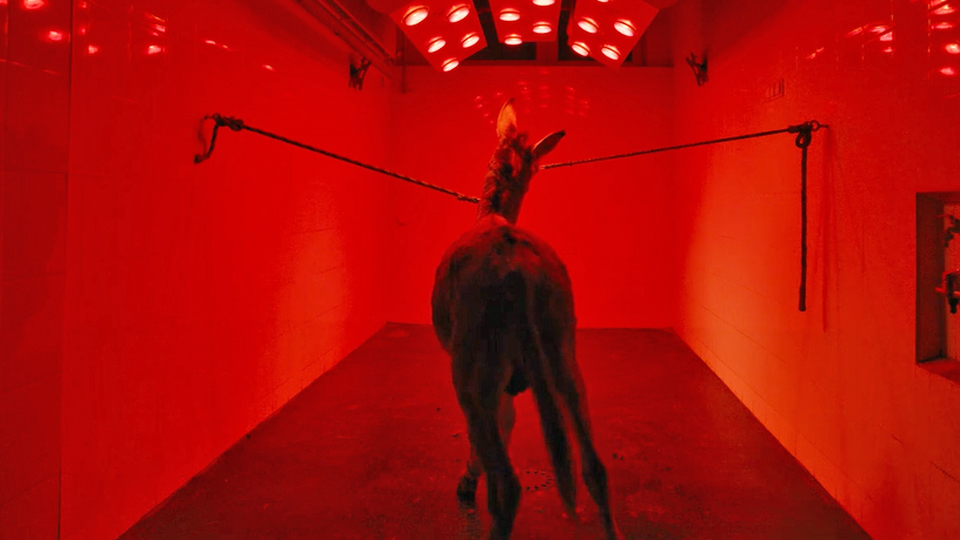
ES: The music is in this film and quite integral to the film. What kind of direction did you give the composer, Paweł Mykietyn?
JS: I worked with Paweł already on two other films so we established a certain pattern of communication. He’s a classical composer, and [his] symphonies are being played all around the world, but he doesn’t treat the film score as a step down from his classical position. He gets emotionally involved.
So for EO we chose something completely different because I asked Paweł to try to express the donkey’s inner monologue. There are certain scenes when we are trying to get into the donkey’s head, like when he walks through the forest at night and he reacts to the elements.
There are two types of music throughout: One is what I describe as very emotional, intimate, personal . . .
EP: Subjective.
JS: Yes, subjective. And the other music is a kind of objective illustration of the mood of certain scenes. It’s easy to figure out which is which, I think.
ES: The camerawork seems similar in that regard—there are some POV shots that are explicitly EO, but there are other objective shots that widen the scope of the movie so it’s not everything from the donkey’s point of view.
EP: With an animal as a protagonist of the film you’re depleted of the one big part of filmmaking, which is dialogue. So instead we had this incredible freedom of looking at reality in an imaginative way with the use of music and sound and everything. Our capacity for creativity was much larger than in other films.
ES: How did Isabelle Huppert become involved?
JS: Isabelle is well known for her attitude towards animals. She expressed her concerns, and we thought that if she was a part of the film her authority would help the film in promoting the message, and help it reach a wider audience.
ES: With someone who has made as many films as you have, Jerzy, people tend to divide their body of work into periods. Do you see any differences between the films you made before and after Ewa came aboard?
JS: I see a definite difference between my films before EO, which is my attitude towards collaborators. Before EO I was rather selfish and much more arrogant than I am now. A painter is responsible for every square centimeter of his works—no one is mixing my paint, no one is dictating the composition, I don't care about potential buyers of my paintings—I do it for myself. I’m an artist with a capital A. With film I was trying to do the same, following my ideas, and I didn’t pay attention much to the discreet, and sometimes not discreet, advice from my collaborators. I was making my film
But with EO I had a really special team. We already mentioned the composer and cinematography, but [also] Ewa and the phenomenal editor [Agnieszka Glińska]. This time I really appreciated her input into the film more than ever before. With the wonderful art director [Mirosław Koncewicz] and costume designer [Katarzyna Lewinska], I encouraged them to give big creative input into the film as much as possible. That’s the biggest difference which I noticed in my work.
ES: In the press notes Ewa described you, Jerzy, as having “a bitter idealism.” Do you agree with that?
EP: We’re so surrounded with unnerving news of our world. Especially with Poland just across the border [from Ukraine]. It gives a strange sense of the rotten path that humankind is taking really. Industrial farming . . . Maybe it's social media, but every day I feel battered by bad news, and it’s difficult to hold onto something pure and innocent. You can’t help but feel sad, really. So my notion about humanity right now is sadness and the bad paths we’re choosing as civilization. The abuse we’re afflicting on the planet; the thoughtless, stupid decisions we allow those who represent us to make on our behalf; immigration; the storming of borders—we’re living in perilous times.
JS: And war again on top of that.
EP: The politics are so crazy. Polish politics are so strange, and I think in the US it’s not much different in that way.
ES: Would you call EO a political film?
EP: No, I wouldn't go so far as to say that. It’s a humane, poetic film. Would you, [Jerzy]?
JS: Yes, but because we’re hoping that after seeing this film, some people will get the idea that maybe they don’t need to consume so much meat, and such a horrible thing like industrial meat production will eventually cease or be reduced drastically.
We both seriously reduced our consumption of meat, like more than two-thirds, and half of the crew stopped eating meat during shooting.
It would be the greatest achievement of this film if such a thing could happen—if the smallest portion of the audience got the message that they shouldn’t exploit animals and treat them as things, [that] they should see them as living creatures in the most democratic way, and that we should share this planet.
ES: That reminds of the robot dog that appears when EO’s beaten down. You can see a sort of link between the death of natural life and the birth of a mechanical one.
JS: You got it completely. It’s a warning that if we don’t change our treatment of animals, then what are we going to be left with? Robots pretending to be our pets? Is that something we should be looking forward to?
EO opens tomorrow, November 18, at Film Forum and Film at Lincoln Center.
